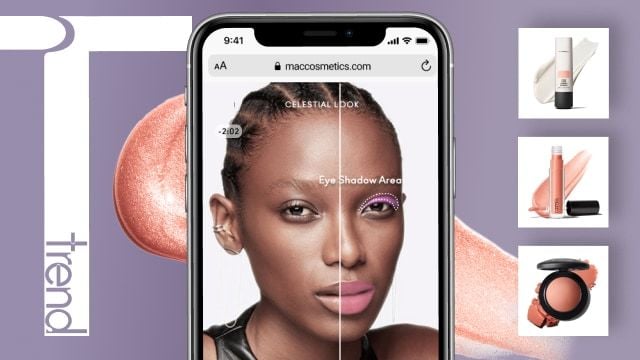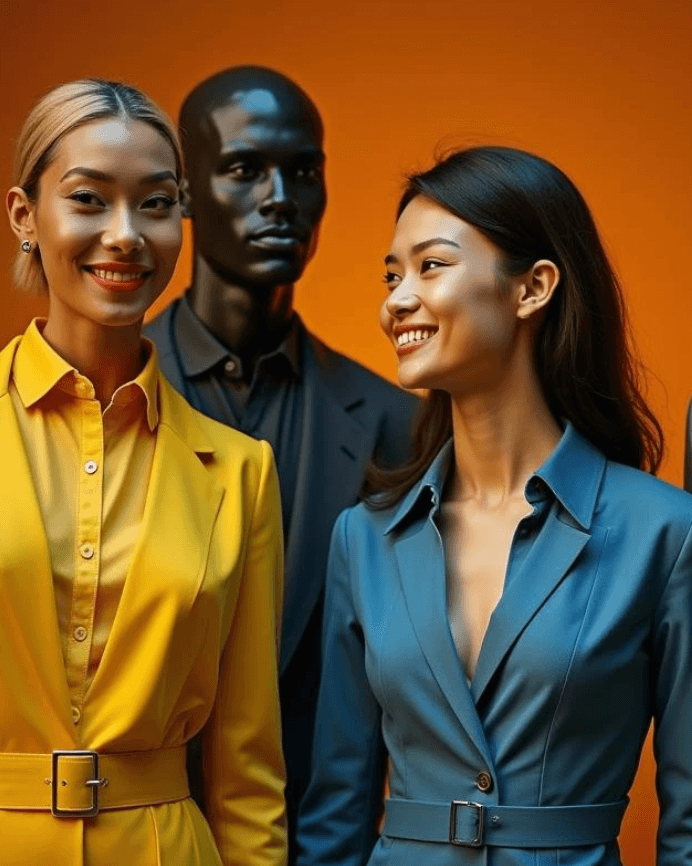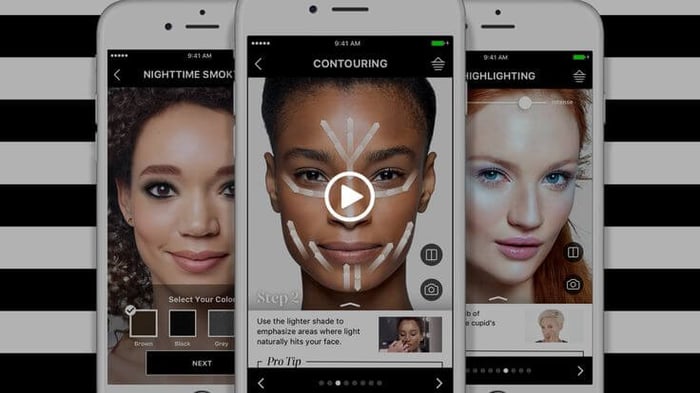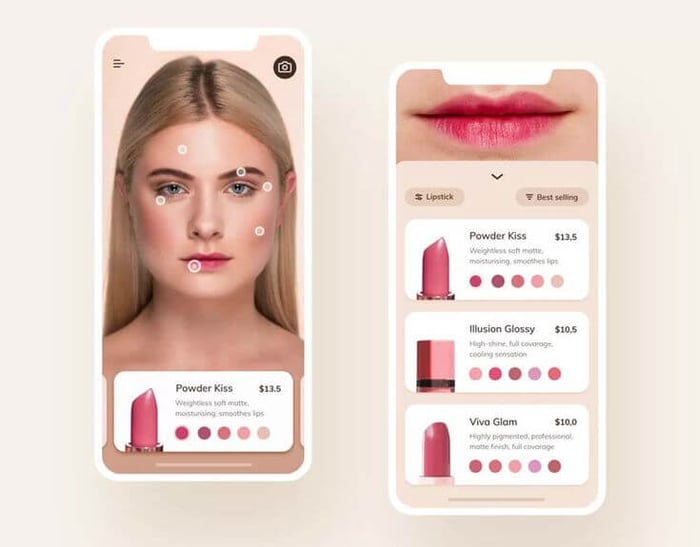Virtual Makeup Try-On: How AR Technology is Revolutionizing Beauty Shopping
Table of Contents
Virtual makeup try-on is a technology that lets users apply lipstick, foundation, eyeshadow, and more all digitally, through their phones or webcams. Using augmented reality (AR), it overlays realistic cosmetic effects on the user’s face in real time, giving them the chance to see how different products look without physically applying anything. It’s like testing makeup in front of a mirror, but without the mess, germs, or second guesses.
Why It’s Changing How People Shop for Beauty
Buying makeup online used to be a leap of faith especially when choosing a shade. With AR-powered try-on tools, shoppers can now test dozens of looks instantly, at home or in-store, making the experience fun, convenient, and personalized. It eliminates uncertainty, reduces returns, and boosts confidence and that’s exactly why beauty brands are adopting it so fast. Virtual makeup try-on isn’t just a tool it’s changing the way people explore and connect with beauty.

How Virtual Makeup Try-On Works
Behind the magic of virtual makeup try-on is real-time AR face tracking. The tech uses your device’s camera to map facial features: eyes, lips, cheeks, jawline and then applies virtual products that respond to movement and lighting. Whether you're smiling, tilting your head, or blinking, the makeup stays in place and adjusts naturally. It’s like Snapchat filters but elevated and engineered for beauty precision.
To take it further, many platforms now integrate AI alongside AR. The AI analyzes your skin tone, undertones, and facial structure to recommend the most flattering shades and styles. It can detect if a blush is too light or a lipstick too warm, and suggest alternatives that match your unique profile. The result is a hyper-personalized beauty shopping experience one that feels curated just for you.

Benefits of Virtual Try-On in Beauty Retail
Try Before You Buy
Virtual makeup try-on solves one of the biggest problems in beauty retail: the inability to test safely and cleanly. Shoppers can now try endless products without opening a single tube. No more product contamination, no need for makeup remover, and no pressure from in-store browsing. It’s fast, fun, and hygienic especially relevant in a post-pandemic world.
Boosting Shopper Confidence and Product Discovery
Not sure if that neon eyeshadow is too bold? Try it on and see. Virtual try-on helps users get creative and explore products they might’ve skipped in-store. This leads to more confident purchases and encourages customers to experiment outside their usual comfort zones which often results in increased cart sizes and stronger brand loyalty.
Personalization and Inclusivity at Scale
Every face is different, and AR knows it. Brands that offer virtual makeup try-on give every user a personalized experience whether it’s matching foundation to deep skin tones or recommending bold lip colors for non-traditional styles. It helps beauty feel more inclusive, breaking away from the “one look fits all” mentality of the past.
How Modelia Supports AR Beauty Innovation
Modelia isn’t just a platform for fashion it’s also becoming a powerful space for creators and beauty brands exploring digital innovation. With virtual makeup try-on tools becoming more relevant, Modelia offers features that allow stylists, designers, and beauty artists to present full digital looks that combine fashion and cosmetics in a cohesive, interactive way.
See how Modelia supports beauty-tech creators
By supporting 3D face modeling, dynamic lookbooks, and AR-powered visuals, Modelia helps brands create immersive beauty content that goes far beyond static imagery. A single visual campaign can now show a model wearing both a digital garment and a virtual makeup look all rendered in motion. This adds a whole new layer to how audiences engage with products online.
Looking ahead, Modelia is exploring ways to further connect AR beauty tools with its creator ecosystem. Imagine a future where shoppers can preview both a lipstick and an outfit on the same model with one click all inside a brand’s profile. This blend of tech, beauty, and fashion opens exciting doors for collaboration and storytelling in the digital space.

Real-World Examples and Leading Beauty Brands
When it comes to virtual makeup try-on, L'Oréal was one of the first to lead the charge acquiring Modiface in 2018 and integrating AR try-on into multiple brand sites. Sephora followed suit with its popular “Virtual Artist,” which lets users test hundreds of lip, eye, and face products on desktop or mobile. These experiences have reshaped what beauty retail looks like, turning the screen into a playground for self-expression.
Virtual try-on tools aren’t just for the giants. Smaller, indie beauty brands are now leveraging AR platforms to reach wider audiences without the cost of in-store testers or photo shoots. By offering realistic previews of how their products look in action, they’re able to build trust and conversion with digital-first customers. Platforms like Modelia give these brands a creative edge helping them present their products in bold, interactive formats that feel as polished as the big players.
Behind the Gloss: What’s Not Perfect Yet
As exciting as virtual makeup try-on is, it still has a few areas that need refining. One major challenge is color accuracy shades can look different depending on lighting, screen quality, and skin tone, which means what you see on your phone might not always match real life. Tech teams are constantly working on improving AI calibration to make these digital previews more realistic and inclusive. Another important factor is accessibility. Not every shopper has a high-end phone or strong internet, which can affect how smooth and responsive the experience feels. On top of that, since these tools often rely on facial scanning and recognition, privacy concerns come into play. Brands need to be upfront about how user data is handled, because trust is just as important as technology when it comes to beauty.

Virtual makeup try-on is just the beginning of what AR can do in beauty. As digital platforms continue to evolve, we’re already seeing the rise of virtual influencers digital personas wearing curated makeup looks created entirely through AR. These influencers are starring in ad campaigns, promoting new products, and connecting with audiences through livestreamed tutorials, all without stepping foot in a studio.
AR is also becoming part of the live shopping experience. Imagine watching a beauty livestream and being able to try the host’s lipstick in real time with just a tap. That level of interactivity is turning passive viewers into active participants, which is great for engagement and sales. And as the metaverse continues to expand, makeup may not just be for your real face it could become part of your digital identity, from gaming avatars to virtual event appearances. For beauty brands, this opens new paths to create, connect, and convert all with the swipe of a screen.
Blending Digital Tools with Personal Beauty
Virtual makeup try-on isn’t just about convenience it’s about confidence, creativity, and control. It gives users the chance to explore new styles, test bold looks, and find their perfect shades without the pressure of a physical counter. At the same time, it allows beauty brands to offer more inclusive, personalized, and engaging experiences than ever before.
Modelia continues to be a key player in this transformation. By supporting digital-first creators and offering tools that merge fashion, beauty, and technology, the platform helps brands tell richer, more interactive stories. Whether it's a full AR-powered lookbook or a hybrid campaign that fuses clothing and cosmetics, Modelia is empowering the next generation of beauty storytelling where every click can be a moment of self-expression.
Subscribe to the Modelia newsletter for the latest updates and stay ahead in the world of fashion and AI.
How would you rate this article:
Related Articles
- Best 6 Fashn.ai Competitors & Alternatives in 2025
- How to Dress for Your Body Type: Complete Style Guide
- Fashion Photography: Tips, Trends, and Techniques for Stunning Visuals
- The Art of Hand-Drawn Fashion Sketches in Modern Design
- Design Eye-Catching Magazine Covers with AI
- 3D Fashion Design: Revolutionizing Fashion with Cutting-Edge Technology
- How to Wear Bold Colors in Fashion: Styling Tips for Vibrant Outfits
- Best 5 AI Sketch to Image Tools to Bring Your Drawings to Life
- 10 Best AI Fashion Free Model Generators
- The Best Clothing for Travel: Fashion Staples for Comfort and Style
